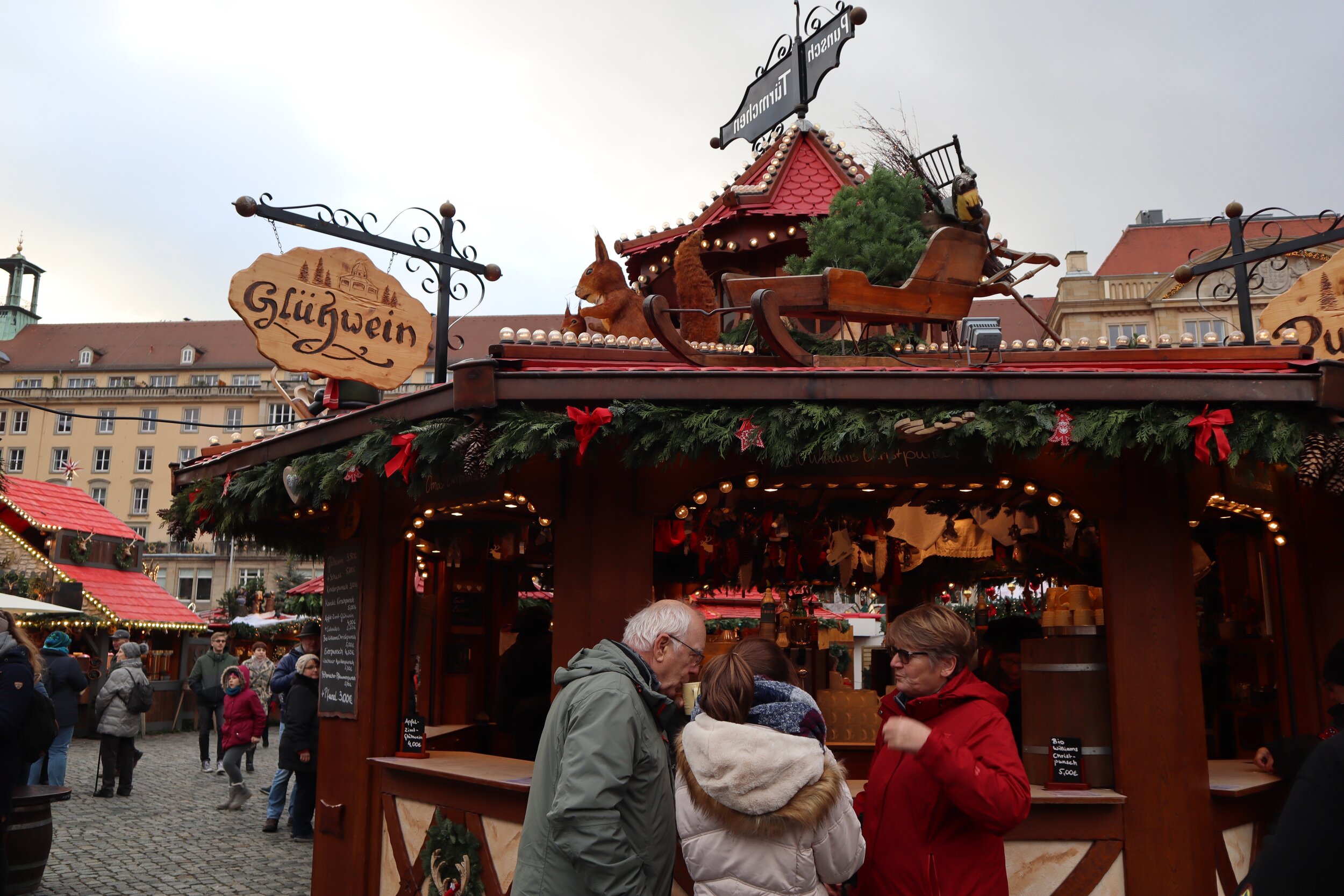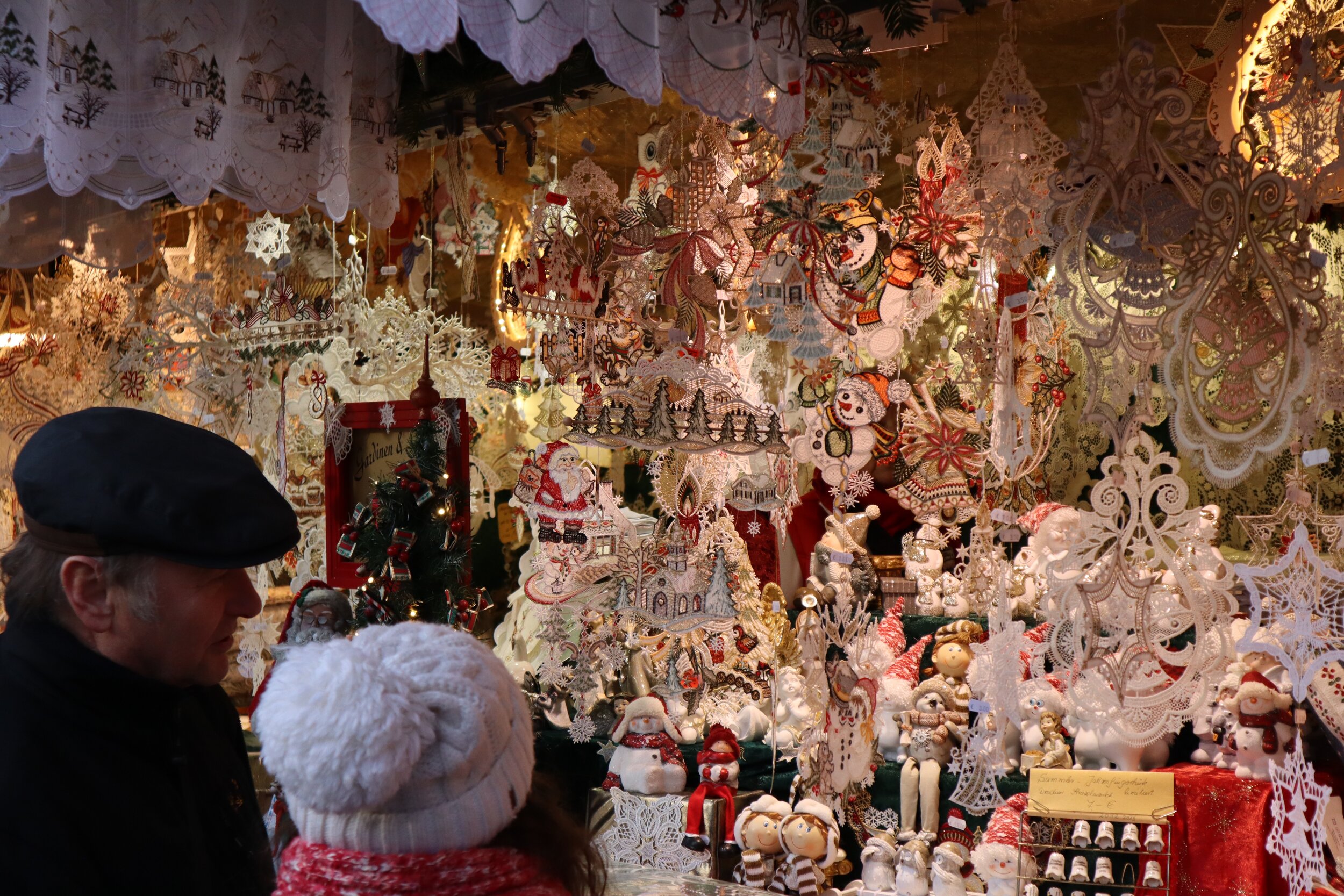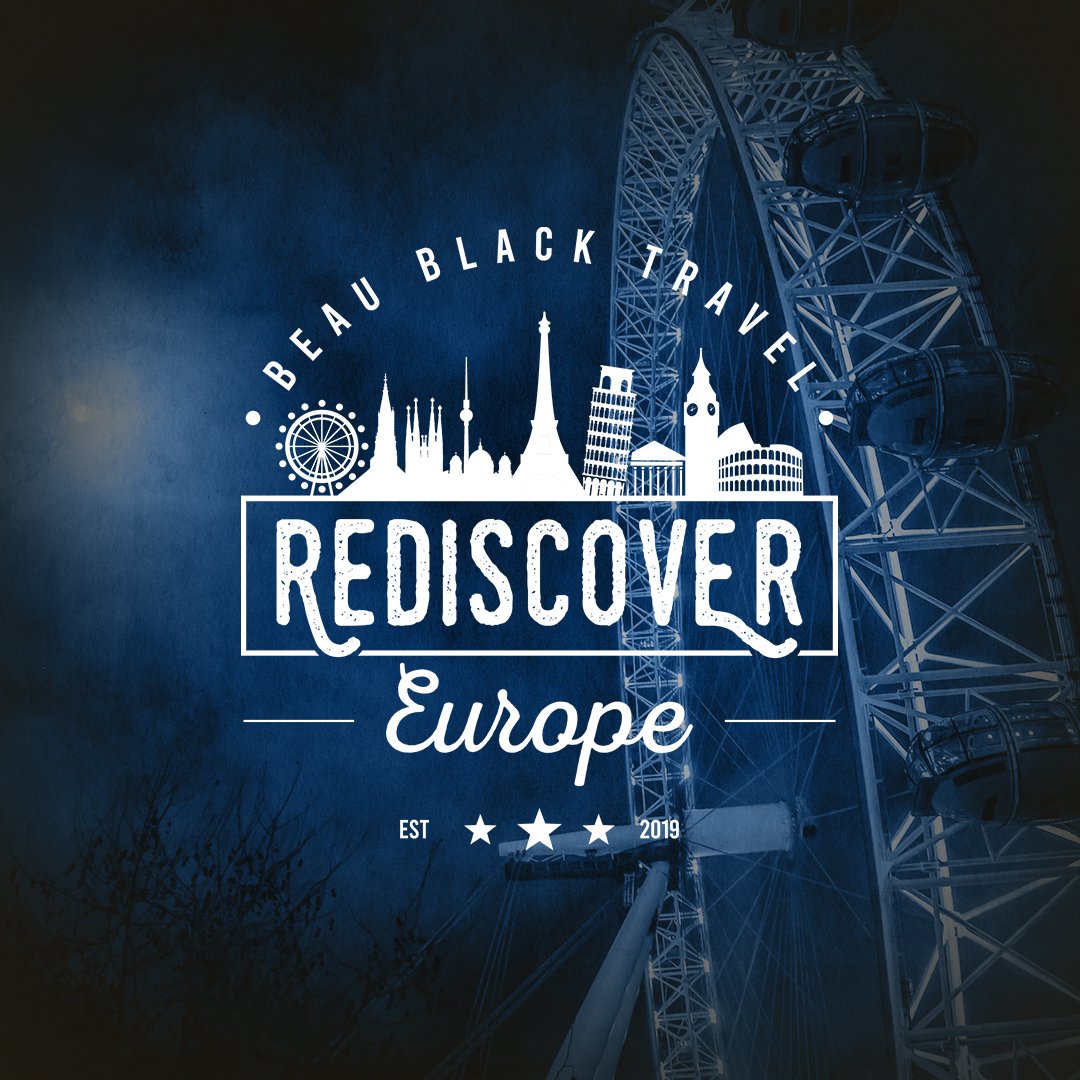There’s no better way to get all the way into the Christmas spirit than with a mug of glühwein and a stroll through one of Europe’s Christmas markets. Over the years, I’ve visited dozens of ‘Weinachtsmarkts,’ or ‘Christkindlmarkts,’ across Germany, Austria, and beyond. Here are my favorites, complied from a half-dozen Christmas-season trips to Europe.
I’m hosting a Christmas market river cruise on the Danube with Avalon Waterways December 2-8, 2024. Consider joining us! But, whether you come along or go on your own, remember that I’m a full-service travel advisor and would love to help make your dream trip a reality.
First, some practicalities: most of these markets open in late November (or very early December) and run until December 23. Some now stay open a bit longer. For info on a particular market’s run dates, Google its name, or find a central site for its town with that info (like the one for Vienna, here). Some booths take credit cards, and some are cash only. Probably best to have some local cash on hand (there’s usually an ATM—‘Geldautomat’ in German—nearby. Stay away from the Euronext or Travelex ones as they tack on extra fees).
Vienna’s Rathausmarkt at dusk.
The Christmas markets sell a wide range of gifts, from clothing, textiles, and kitchenware to leather goods and decorative items. You’ll also find a dizzying selection of Christmas ornaments (pewter, wood, glass, lace, fabric, etc.) and décor of all kinds. And every market has a different set of these, so it’s really worth exploring multiple markets.
It’s fun to drink a hot beverage while walking around in the cold, and there are always a number of options. Beyond hot chocolate and cider, you’ll find several alcohol-infused punches and the ubiquitous glühwein, a hot spiced wine drink that’s perfect for the Christmas season. Why not try them all?
Maybe not all.
One of a dozen booths serving glühwein at Dresden’s Altmarkt.
And a quick word on mugs: each market has its own souvenir mug for that year. When you purchase that glühwein or hot chocolate, your price includes the deposit for the mug—usually a couple of euros. You can return it to a central location (or the vendor where you got it in some cases) for a refund of the deposit—or keep the mug. Your call.
The Markets
Vienna is beautiful any time of year—think of it as an Austrian Paris without the attitude, urine-smells, and B.O. But the city literally lights up at Christmastime, adding a whole ‘nother layer to the city’s pleasantness. There are numerous markets around town, but the two best are the Rathaus (city hall) and Schönbrunn markets, because of their settings, size, and variety of goods, eats, and drinks. The Rathausmarkt, splayed out in front of the elegant city hall, hosts a skating course, lots of food, and the usual spread of Christmas ornaments (name a material, you’ll find it) and gifts. It’s best visited at night to catch the full experience. The Rathaus is located on the Ring and directly across from Café Landtmann, the Burgtheater, and the Volksgarten. The tram stops in front and the U-bahn behind it.
Further out, Schönbrunn Palace is the backdrop for its namesake market, its booths arrayed in an elongated oval right out front of Vienna’s grandest palace. This one isn’t quite the production that the Rathausmarkt is, but the variety and quality of goods on offer make it a favorite. [Below, Schönbrunn’s market rings this courtyard; the Rathaus glows for Christmas, and so does the Graben.]


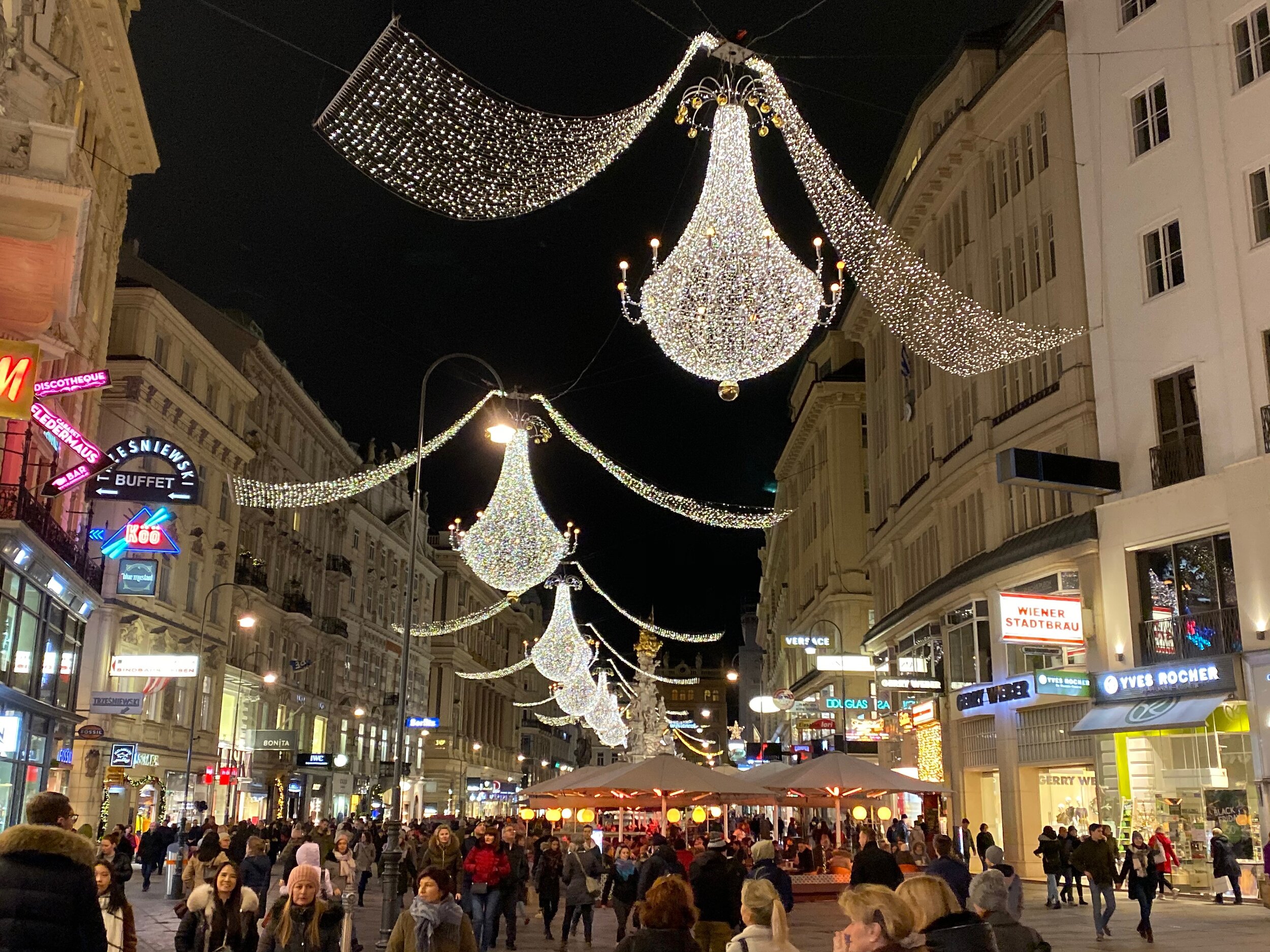
Other markets worth a visit are found in the square between the Kunsthistorisches and Naturhistorisches Museums, at Karlsplatz, at Schloss Belvedere (another palace), and two smaller markets in the center of town, at Freyung and am Hof, both near the Herrengasse U-bahn stop.
Salzburg is another town that’s just a delight year-round, but especially so in the Christmas season. The main market snakes around Salzburg Cathedral (so, Mozartplatz, Residenzplatz, and the courtyard across from the cathedral’s entrance, all in the heart of the old town). Across the river Mirabell Gardens offers an iconic view of Salzburg and ist fortress. Out front, there’s a small Christmas market, with lots of unique items you won’t find in the bigger Altstadt one. Hit both. There’s also a market at Hellbrun Palace just outside of town (and reachable by bus), though on my attempt at seeing this one, it was closed.
Entrance to Salzburg’s old town market. Boutiquehotel am Dom is about 20 feet behind me.
[Below, some morning views of the old town market in Salzburg.]
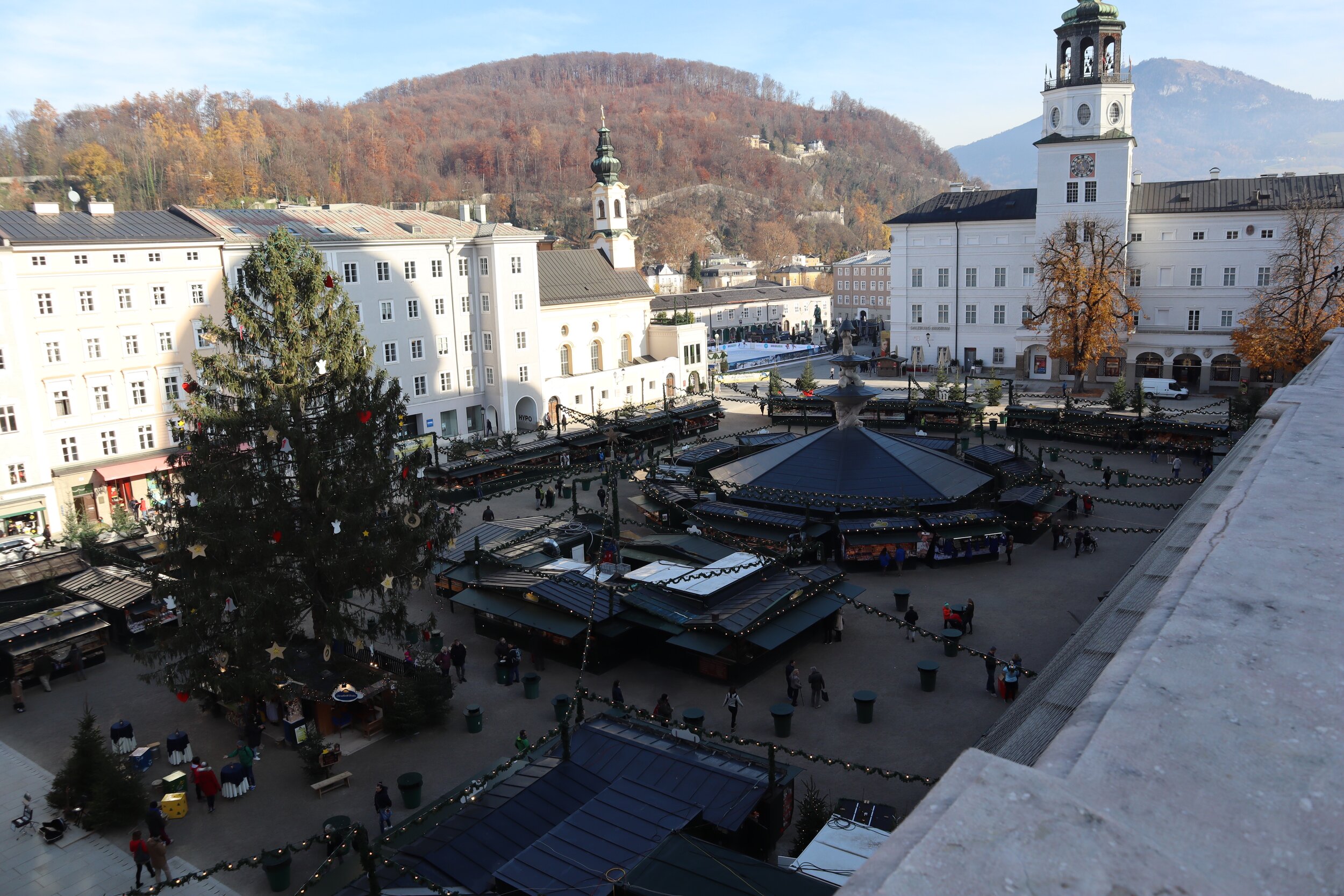
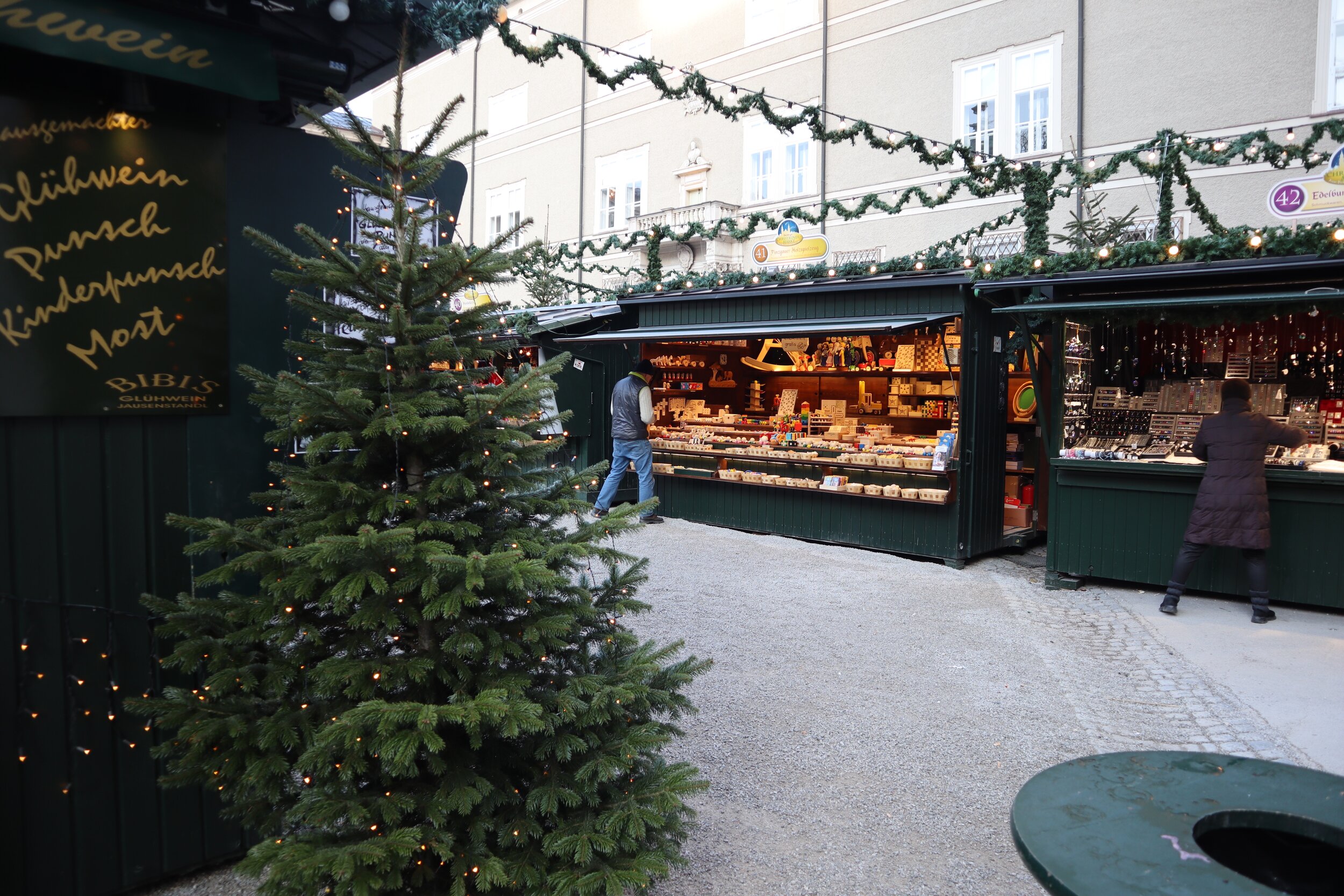
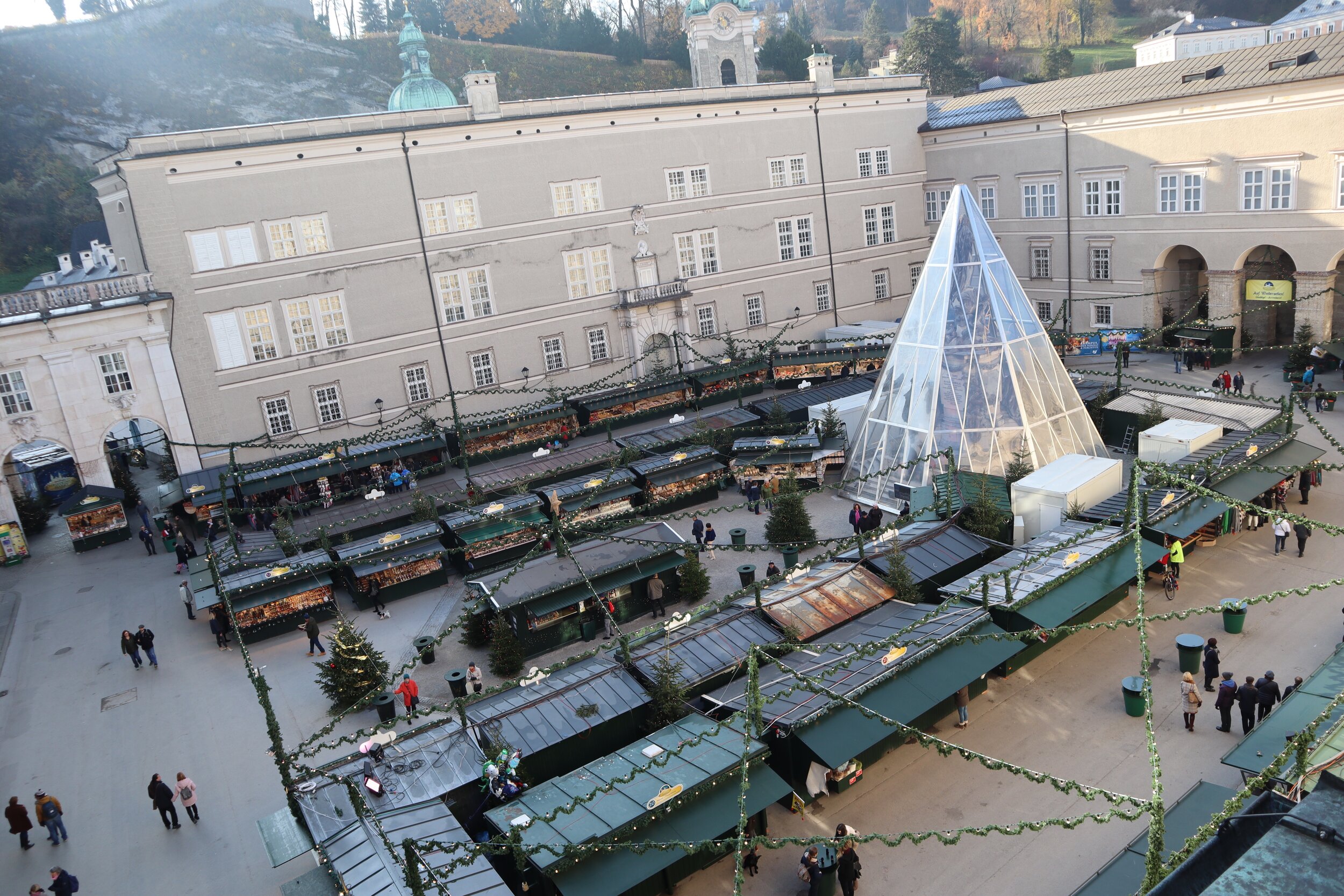
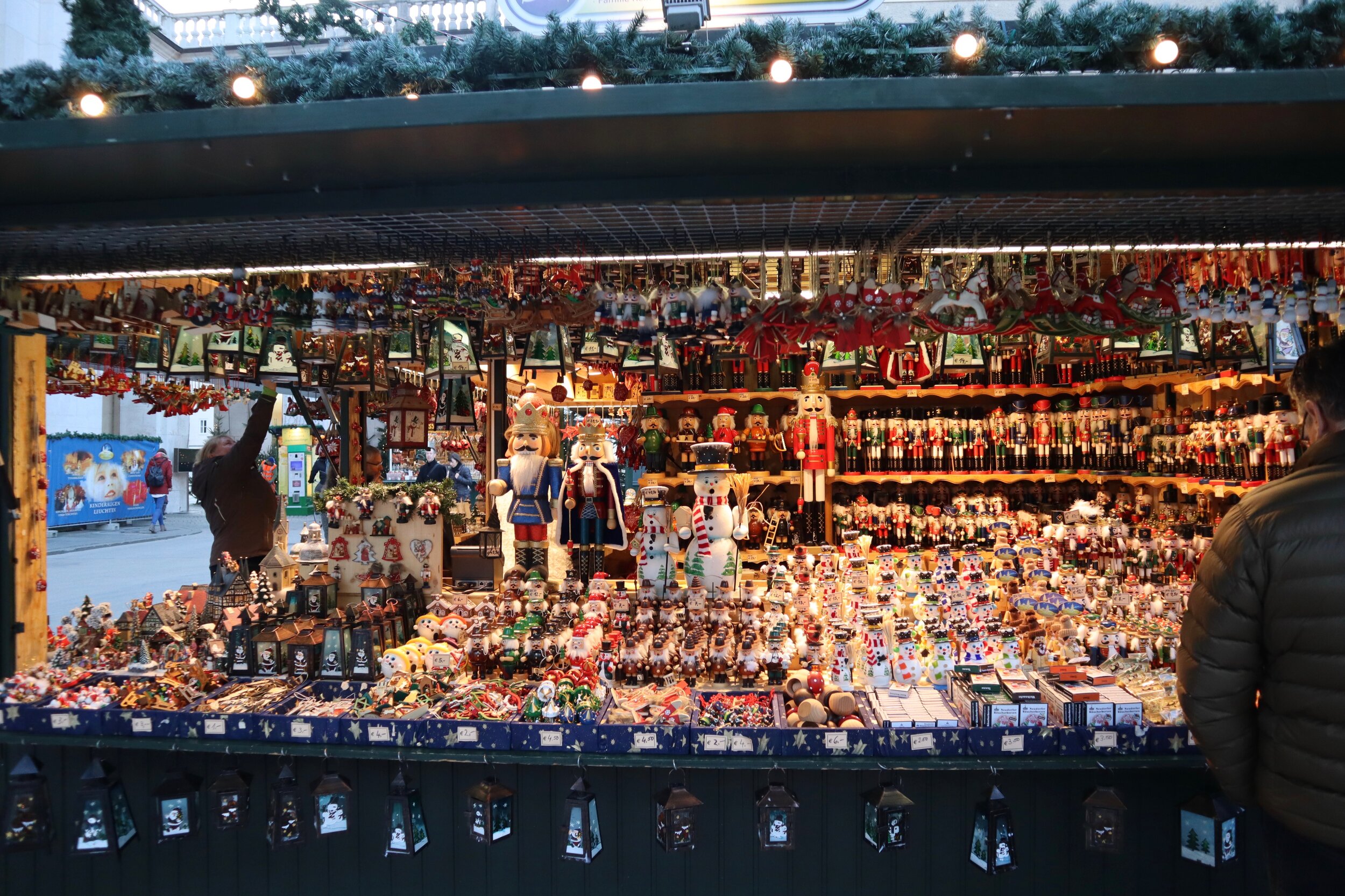
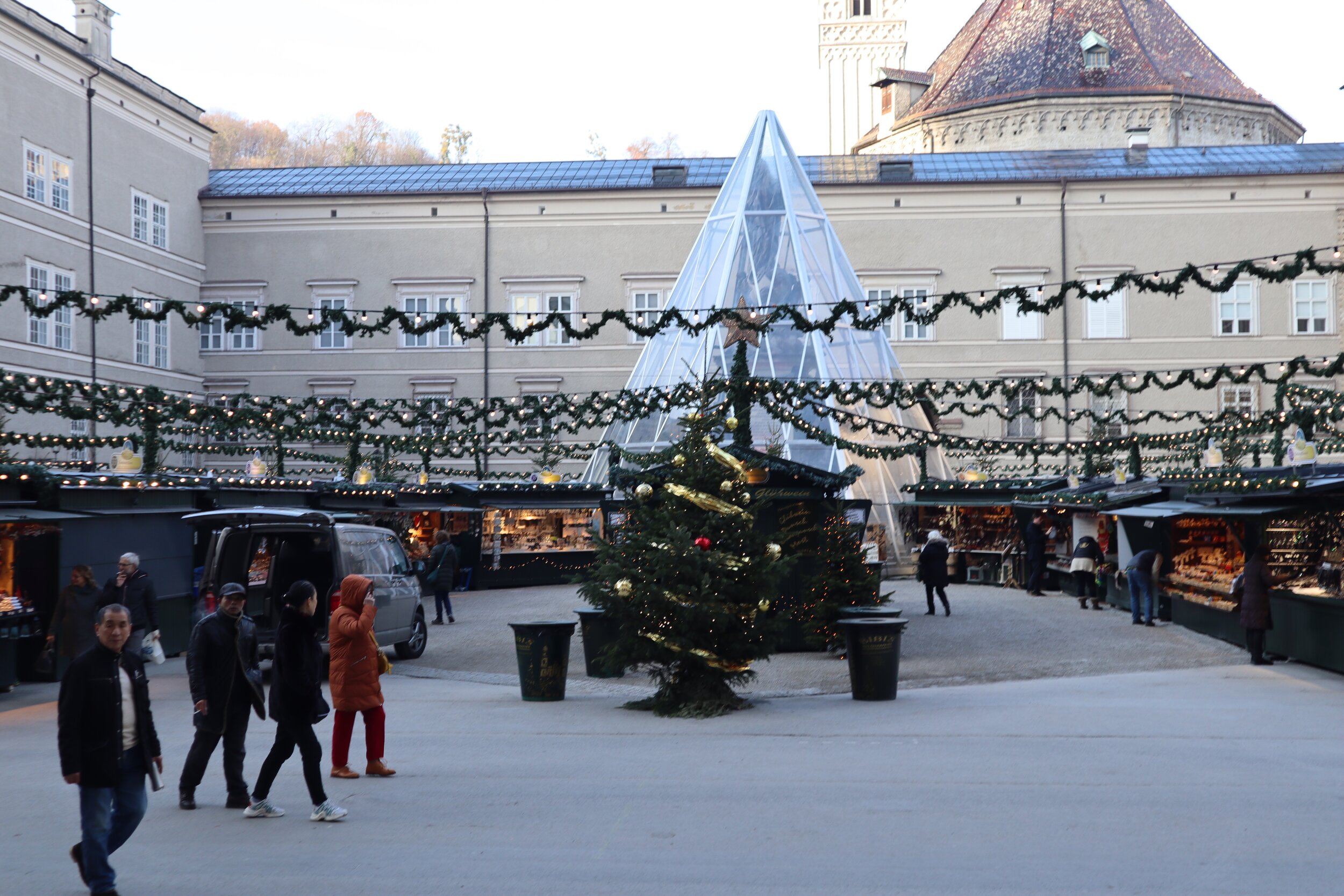
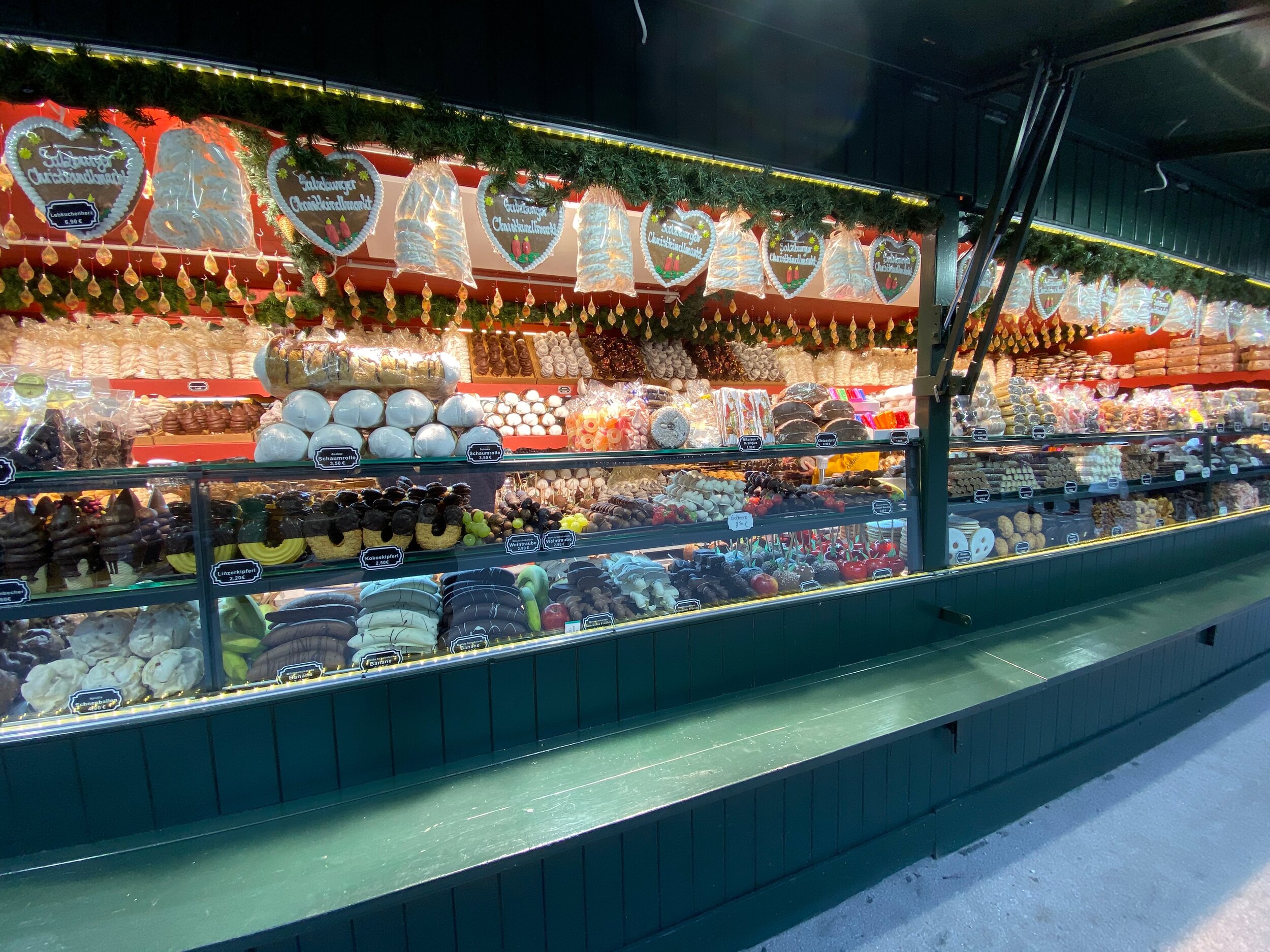
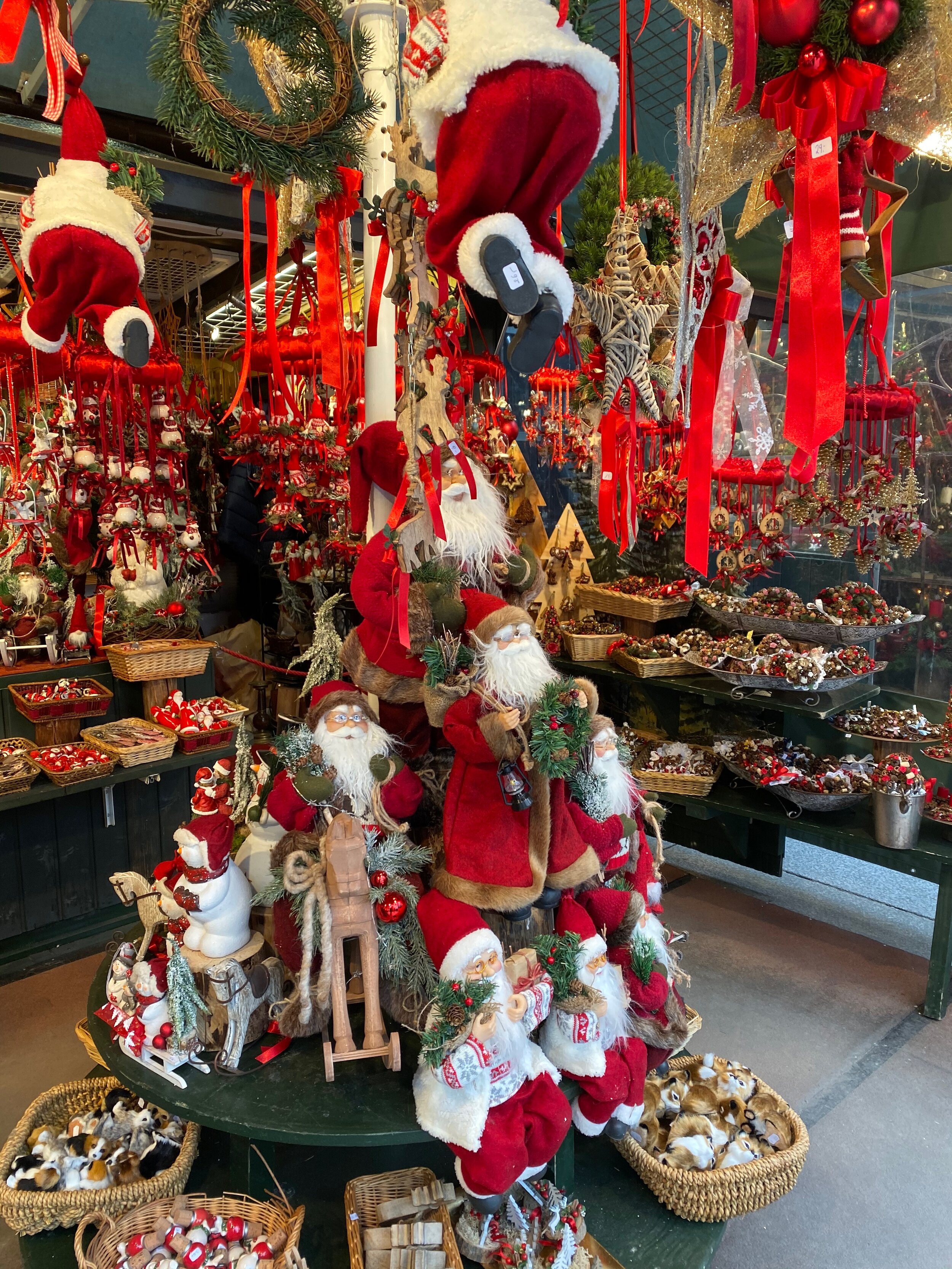
Just a few ornaments in this booth, in Dresden.
Dresden is COLD in December, I have learned. Its Christmas market on the Altmarkt is perhaps my favorite single market—both because of the variety of goods (lots of wooden Christmas decorations here) and food (stollen!) and because all of the booths are decorated to the nines. It’s jam-packed with people and food and stuff and rides, and it’s just wonderful. For a break from German food, either grab a burger at Hans im Glück, or walk around the corner to find a virtual United Nations of dining options on Weiße Gasse. The smaller market at Neumarkt by the Frauenkirche spills down a restaurant-lined side street (by the Hilton) towards the Elbe River.
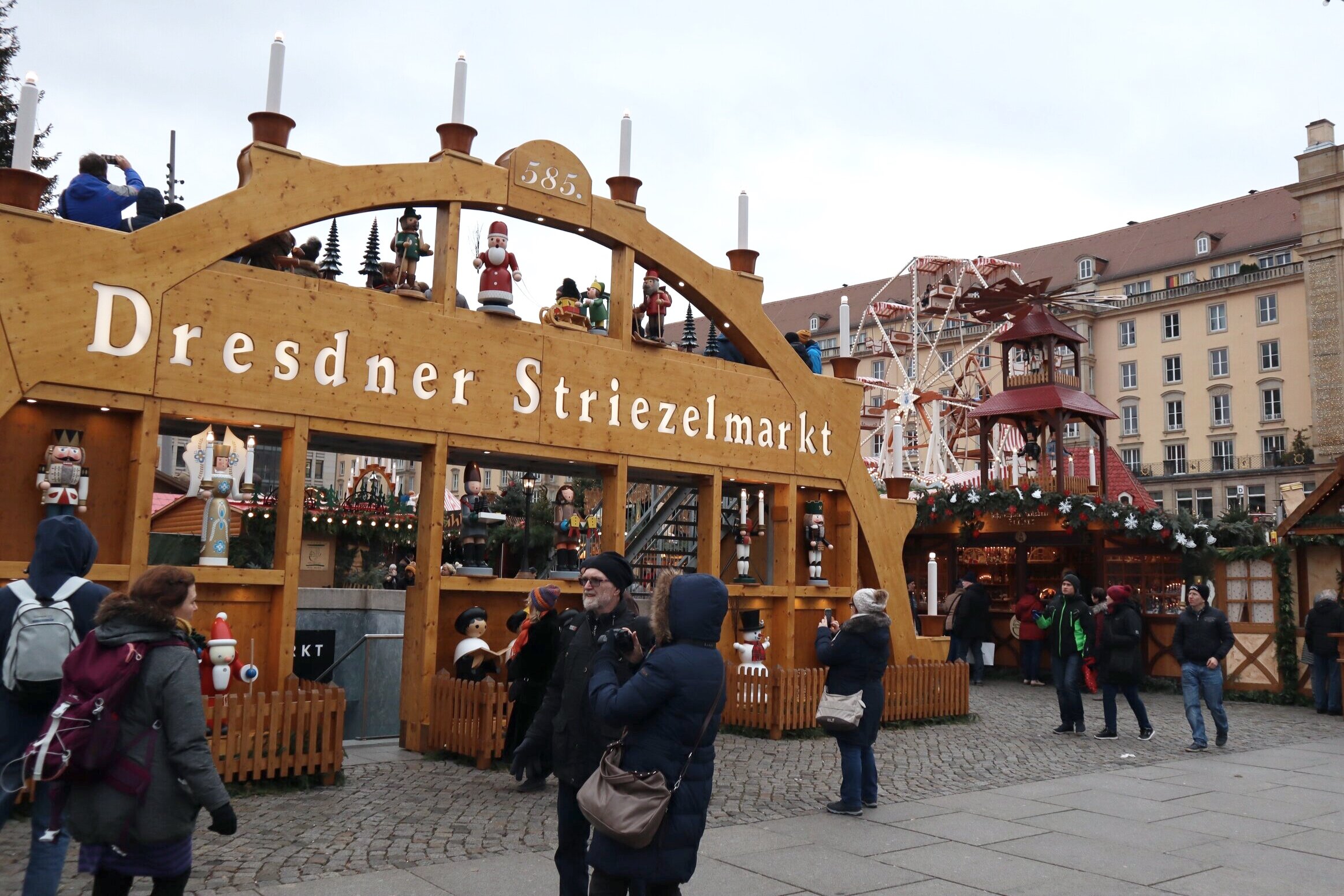
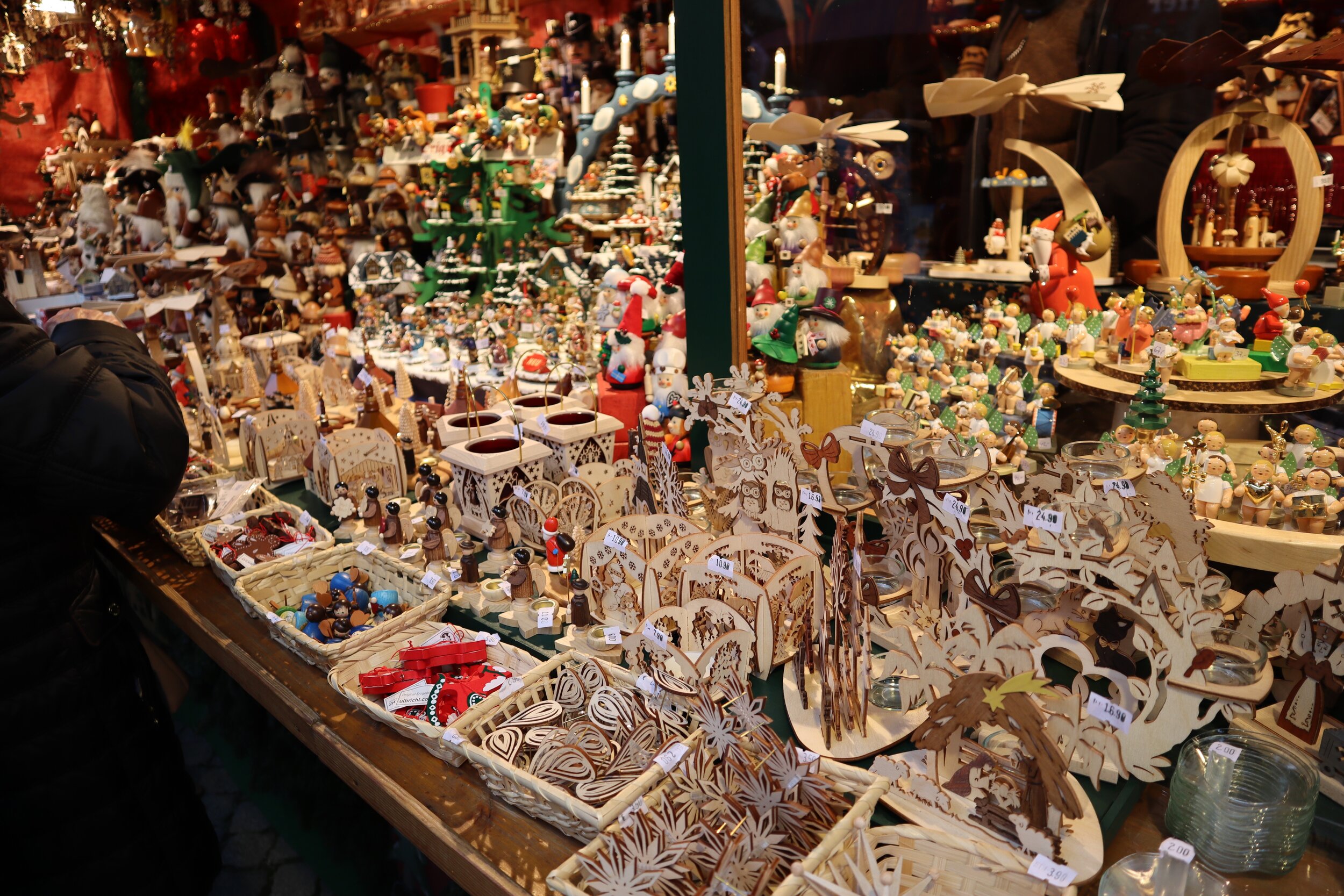

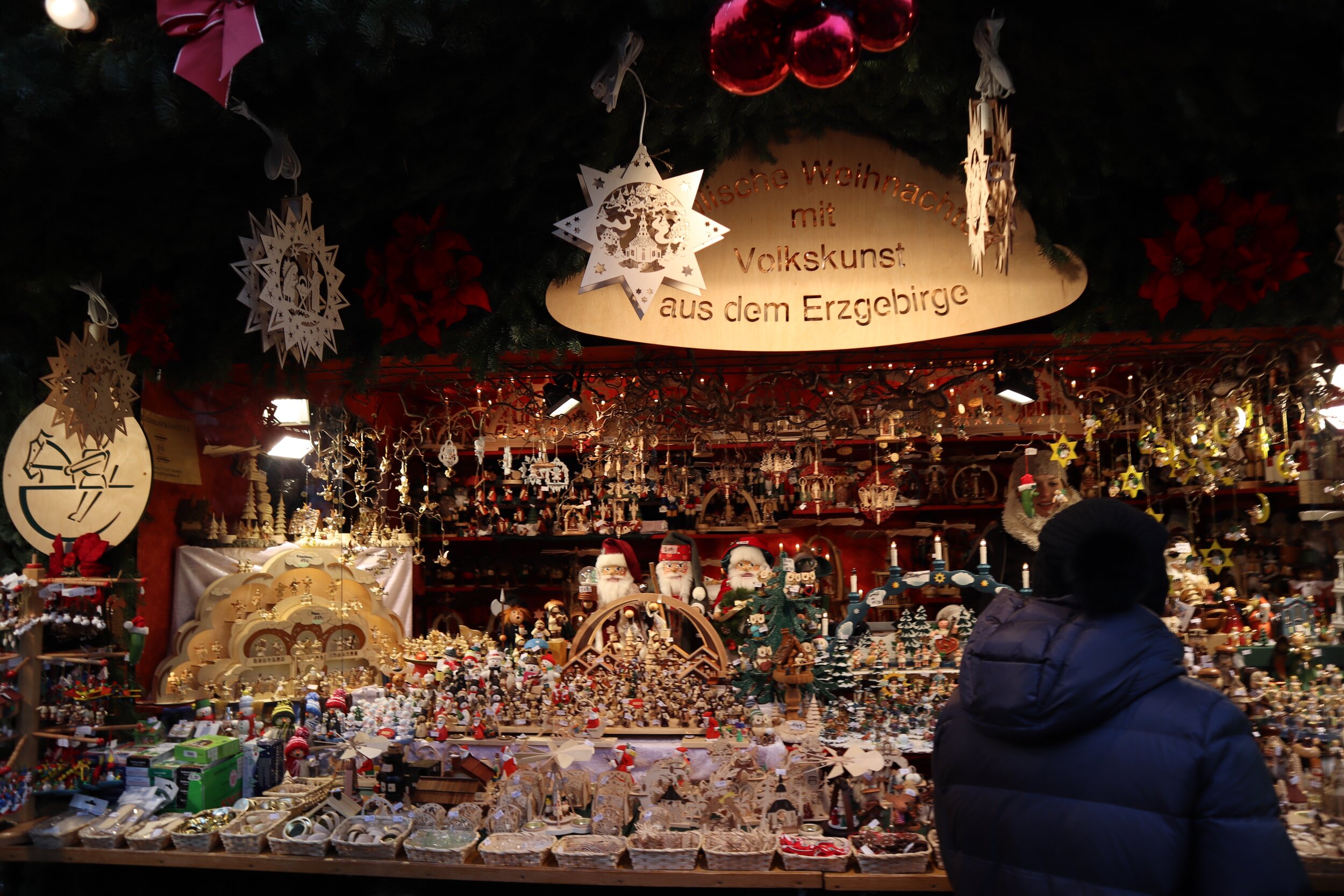
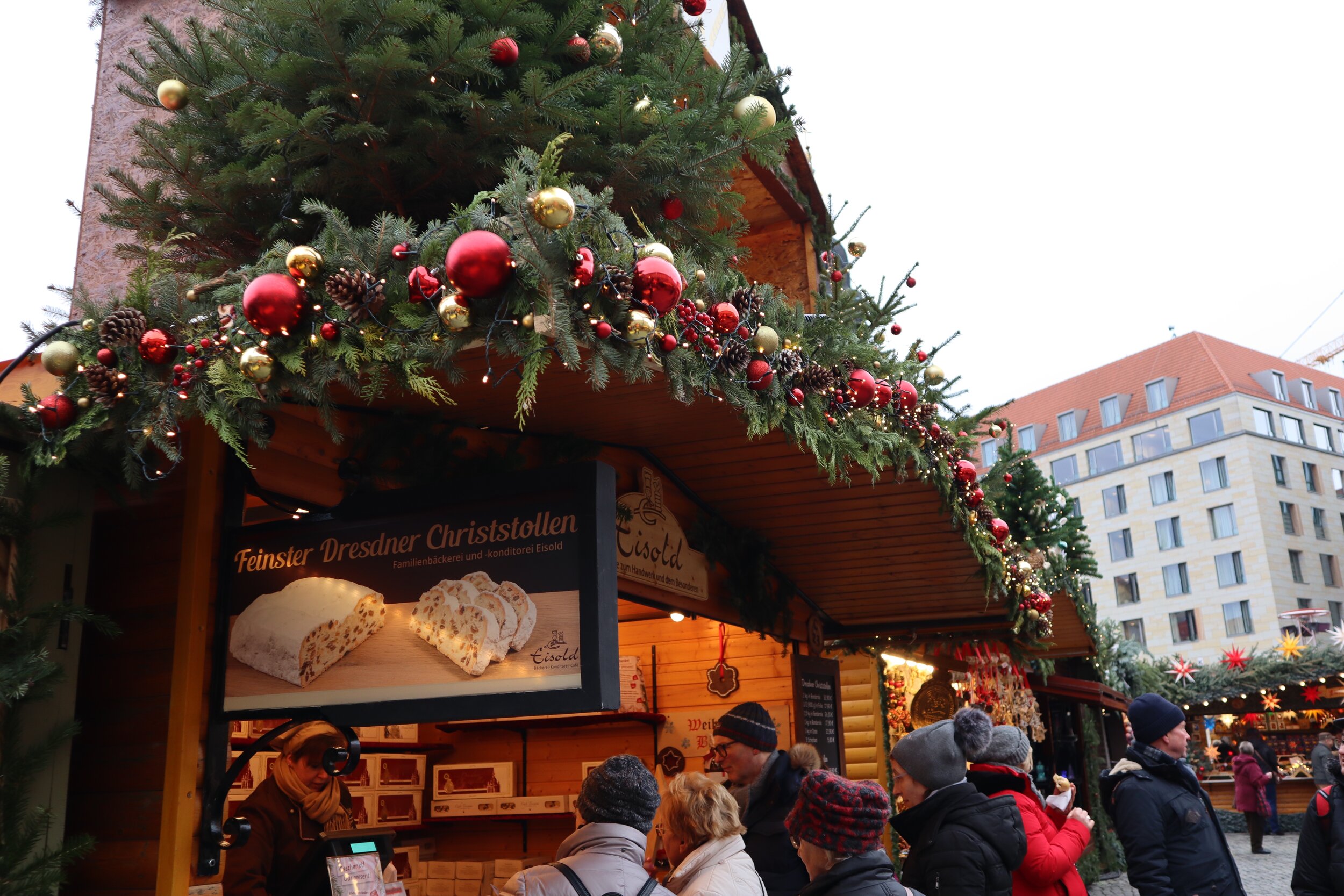

I mean, seriously.
Rothenburg ob der Tauber is on this list not so much for their Christmas market, but more because the whole dang town feels like Christmas. That’s partly because German Christmas store Käthe Wohlfahrt is here (with probably ten different stores around town), but also because the medieval old town is decked out in greenery and lights from late November until the big day. The Christmas market itself starts at the main square in front of the Rathaus and winds back through several nearby courtyards. Its setting is probably more notable than the market itself.
Visit the two main Käthe Wohlfahrt stores, located across from each other on Herrengasse. They’re eseentially a year-round Christmas market with a permanent location; the larger of the two also has a small museum. Further down this street toward the castle garden, find a small print shop, Galerie zum Burgtor, whose friendly owner will likely ply you with alcohol while you browse. And just off the main square on Obere Schmiedgasse (towards Plönlein), look for Bunte Truhe (pewter Christmas ornaments, and decorations for the rest of the year) and the Waffenkammer (knives of all kinds). [Below, two of the many Käthe Wohlfahrt shops. Also, got cake? The cafe by the fountain does.]
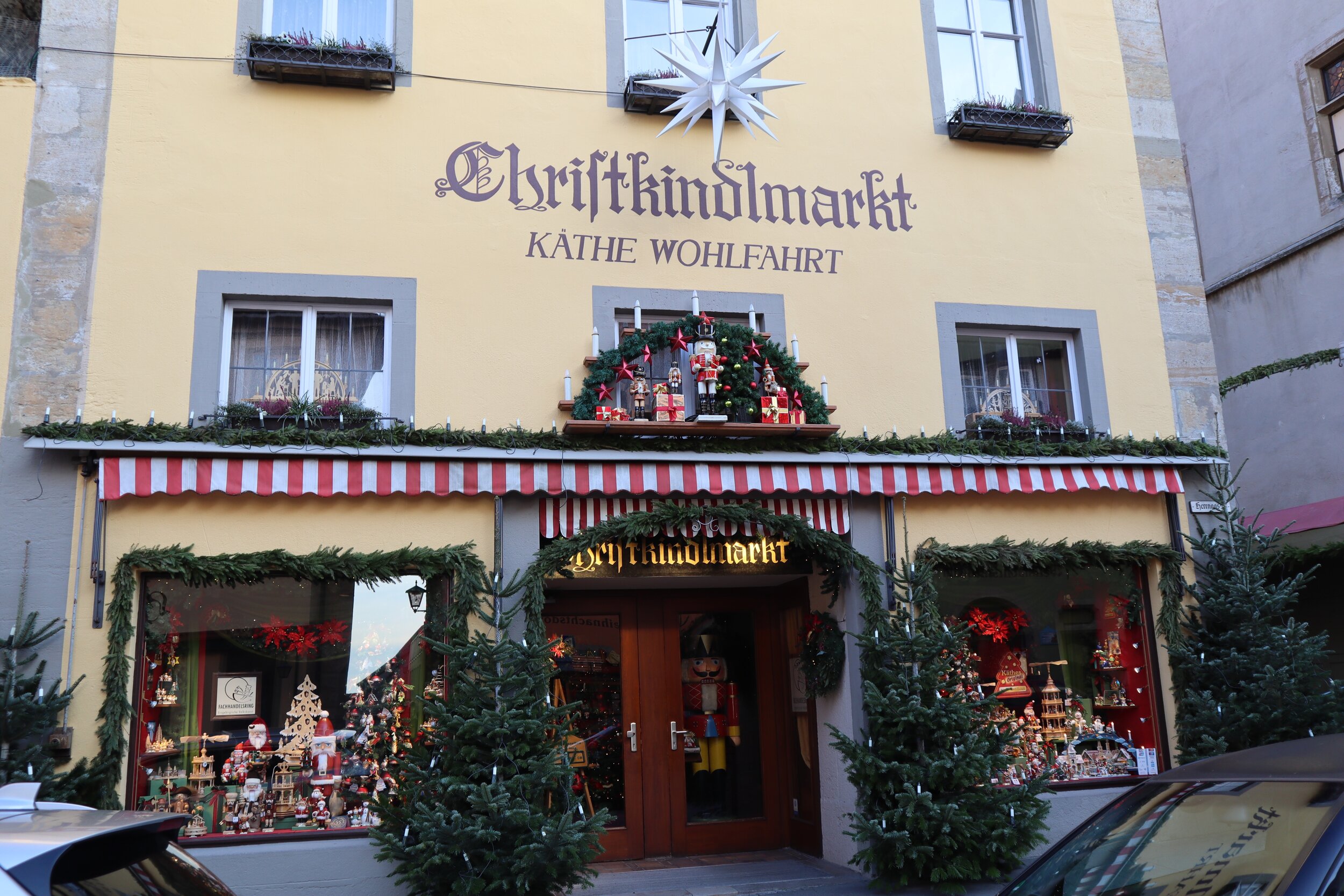
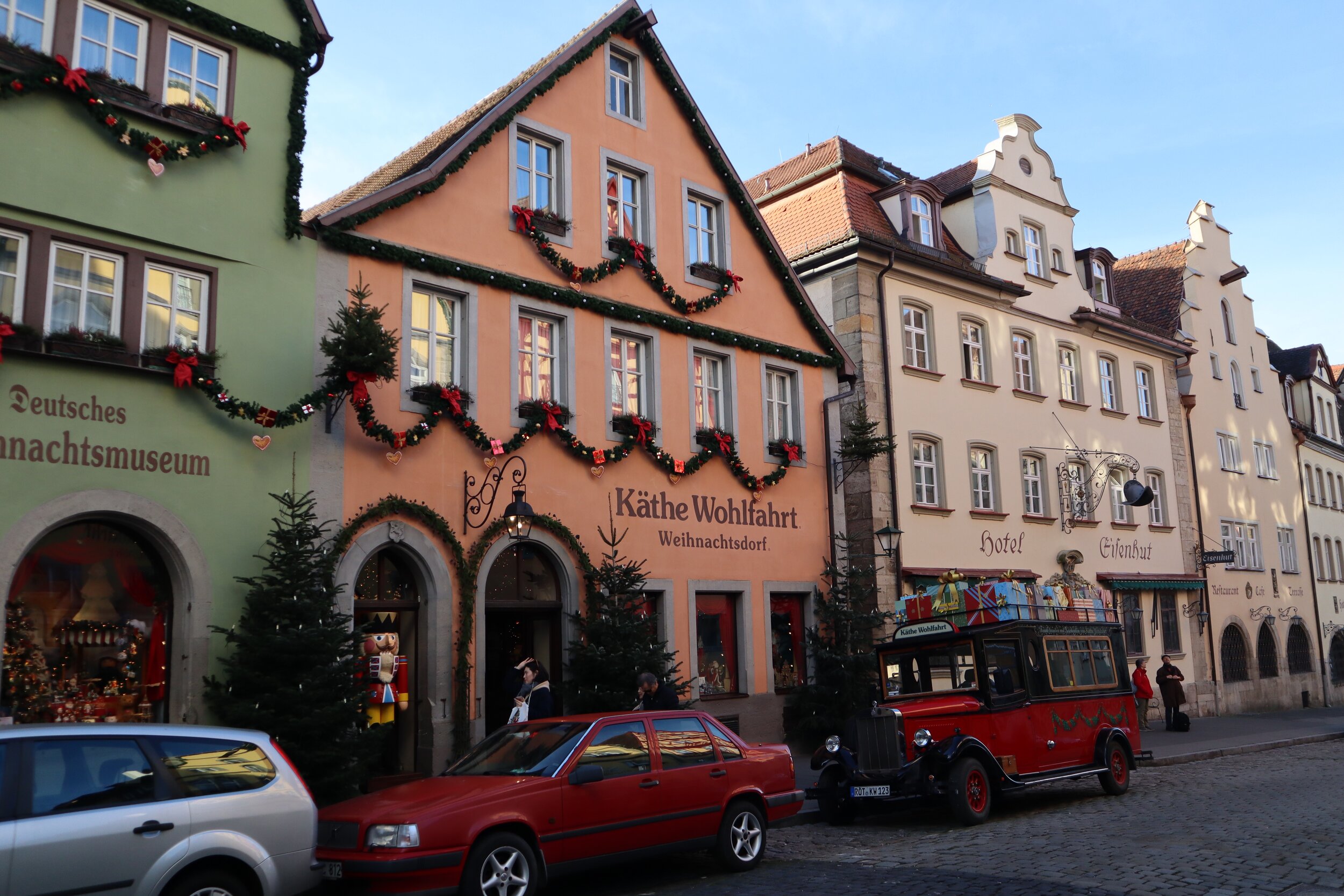
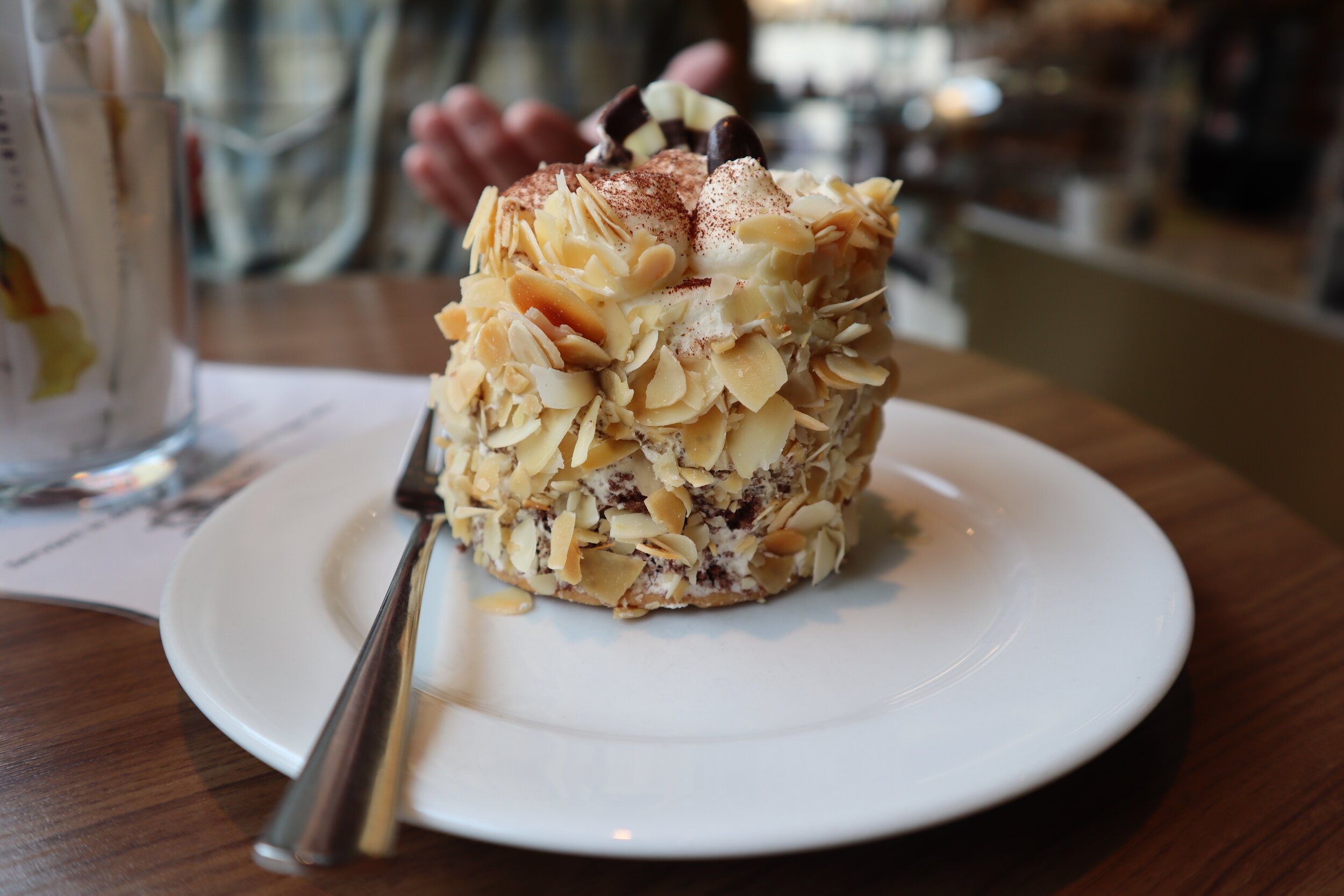
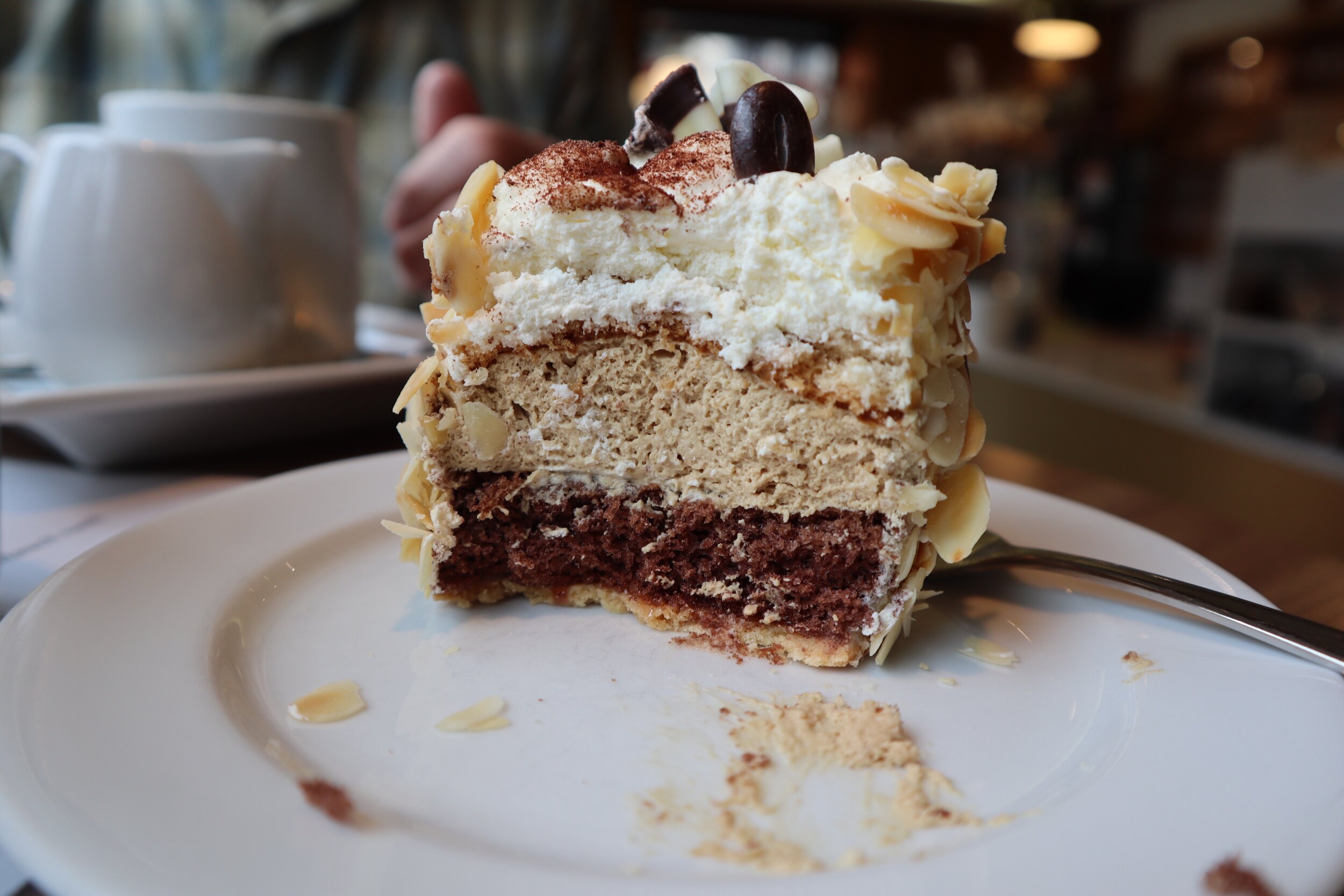
Skippables. In Munich, I just don’t find much selection-wise that’s of interest. And Cologne combines lack of interesting stuff with a big crowd. Find Santa elsewhere.
For more information on the cities listed in this post, see the individual articles on each on the site’s main page or Destinations page. My hotel and restaurant recs for these and other European destinations are reserved for my clients—so when you’re ready to plan your trip—or if you want to come along on ours—shoot me an e-mail. I’d love to help or have you join us.



